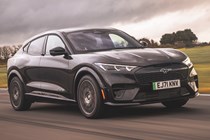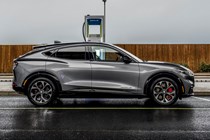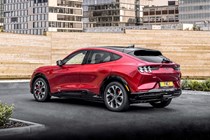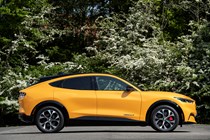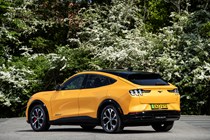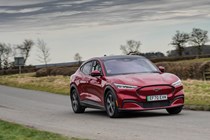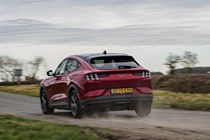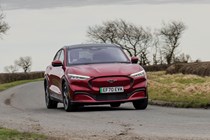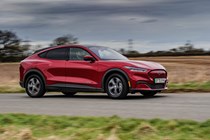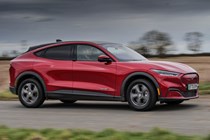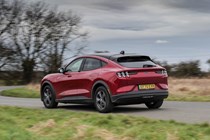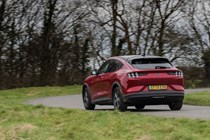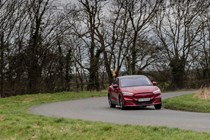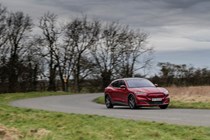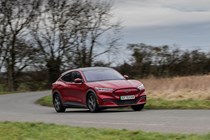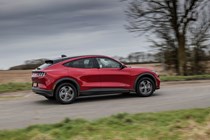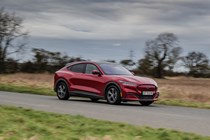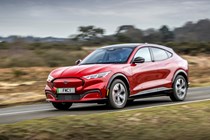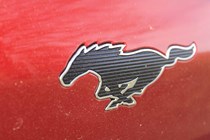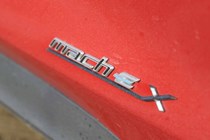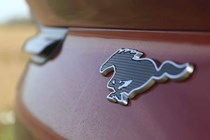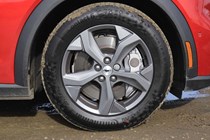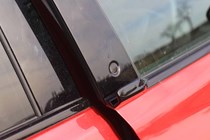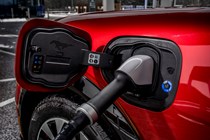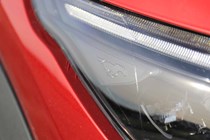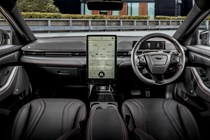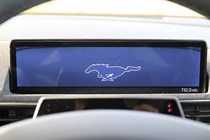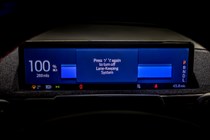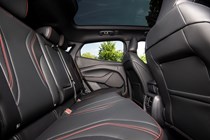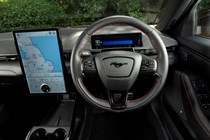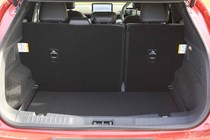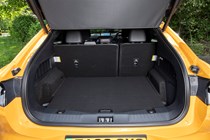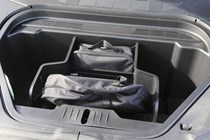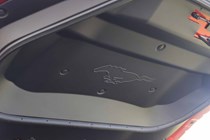Ford Mustang Mach-E engines, drive and performance
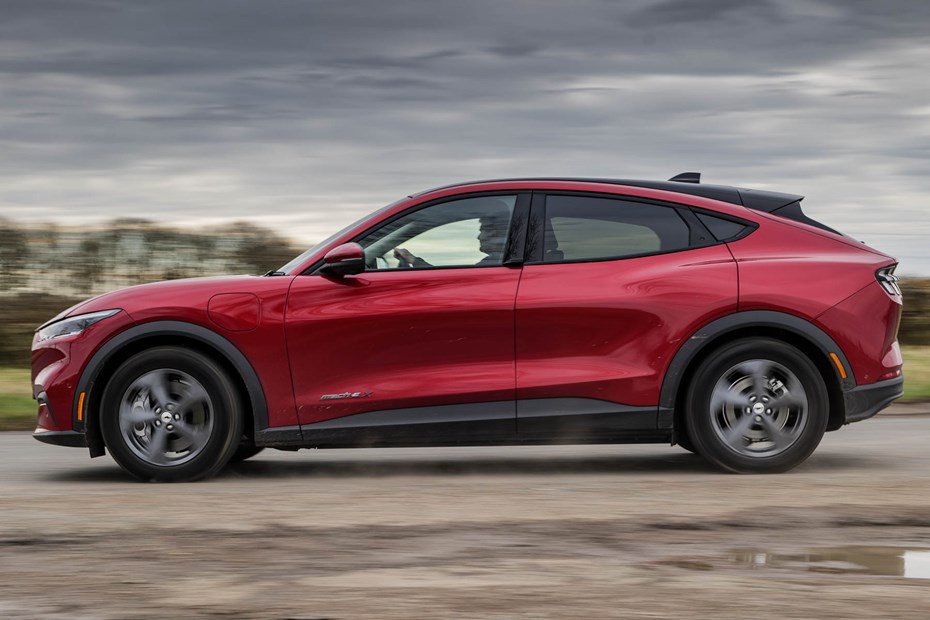
- Five versions to choose from
- Standard and extended range
- Rear- or all-wheel drive
Electric motors
The Ford Mustang Mach-E has five power options made up from a combination of rear- or all-wheel drive, and standard or extended range. Mixing and matching these characteristics yields a variety of results. All-wheel drive cars have two motors and therefore more power, but less range than the single-motor rear-wheel drive models.
Even so, the smallest range (AWD and standard 68kWh battery) is a useful 248 miles, while the longest journey on a full tank comes from the extended 88kWh battery paired with rear-wheel drive. This also happens to be our favourite car in the line-up – more than powerful enough for most everyday applications with exciting rear-wheel drive dynamics.
Three drive modes tailor the power delivery, named Whisper, Active and Untamed. The first is understandably the most relaxed, with a laid-back throttle response and no augmented driving noise. It’s great for a long drive or when you’ve got passengers, but there’s almost no regenerative braking effect when you release the accelerator pedal, which takes a bit of getting used to. In addition, you also get Active and Untamed modes for when you’re feeling sportier.
You can separately turn the engine noise on or off, and enable one-pedal driving. This is the strongest regenerative setting and will slow the car down to a stop when you take your foot off the throttle.

What’s it like to drive?
- Like no other Mustang before it
- Rear-wheel drive the purest model
- More fun and involving than rivals
This is a fun electric car, and those are not exactly in abundance right now, save for the Jaguar I-Pace or Porsche Taycan. You’ll enjoy your time behind the wheel more than in a Mercedes-Benz EQA, that’s for sure.
The rear-wheel drive models are the best placed to carry the Mustang badge and while not quite so keen to light up the back wheels on a roundabout or do a big burnout at the traffic lights, you can feel the rear of the car pushing wide while cornering fast, even if it means trying quite a bit harder than in the petrol model.
Still, we like the way the rear-drive car runs out of traction at the rear first, so the front wheels usually go where you point them. There’s very little fun-sapping understeer in the Mach-E (where you turn the steering wheel and it carries on straight) and a satisfying sensation of the car’s back end pushing you through the corner, rather than the front dragging you around.
A little less impressive is its ride quality. It’s not an uncomfortable car by any stretch, but you’ll notice lumps and bumps on the road being translated into the driver’s seat. This is worse at low speed – when you pick up the pace a bit the suspension feels like it smooths things over more effectively. At motorway speeds the car is calm and composed.
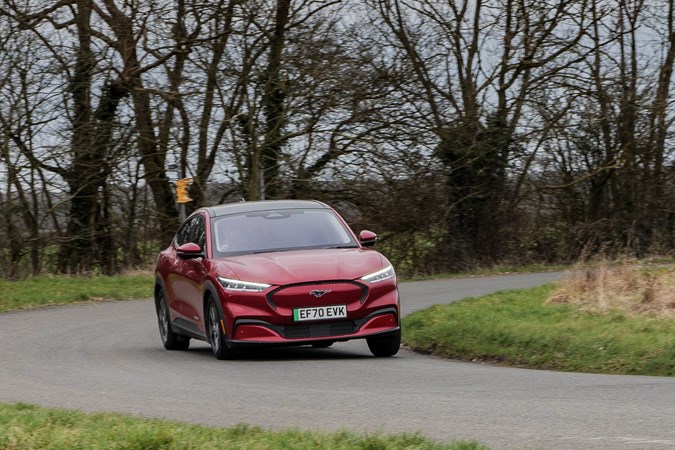
Even driven at modest pace the Mach-E feels balanced and poised – its firm-riding suspension coming into its own by holding the car up in corners rather than leaning over and good all-round grip levels that will leave a smile on your face.
But while we’re full of praise for the chassis, it’s fair to say the steering takes some getting used to, and that’s an odd thing to say about a Ford. It’s certainly accurate enough but feels very numb with the wheel in the straight-ahead position, before suddenly speeding up as you rotate it.
This means you might find yourself turning into corners more than you expected at first. If you’ve driven a Ford Fiesta ST or Focus ST this learning curve will be shallower, as it’s broadly similar to those cars.
Top spec GT cars are by far the fastest in the range. The ferocity of the acceleration is most urgent at low speeds. Peak torque is achieved in half a second. Lining up an overtake on a single carriageway takes longer than the task itself.
If you’d like to know what a serious bit of kit the GT is, remember it has bespoke tyres and an additional driving mode. called Untamed Plus. This does the usual stuff (sharpening, stiffening, jiggling) but also turns off the power-boost function, prolonging the battery track use. Fuel saving like they do in F1, but in an electric SUV. What a world we live in.

BlueCruise enables drivers to go ‘hands free’ in designated Blue Zone areas. Broadly these are wide, open stretches of motorway, with Ford reckoning 95% of the UK’s motorways are eligible.
It then works much like an adaptive cruise control system. You can set your speed and distance to the car in front and the car measures everything out to keep you in a safe range.
It works seamlessly, but if you’ve used a car with adaptive cruise control before, you won’t be blown away by this. Once you’ve reached a Blue Zone it’s simple enough. The hands-free prompt comes through immediately. Then it’s just a case of setting the cruise control and boom. You’re hands free driving.
There’s still no legislation in the UK to allow autonomous lane changing. So once your hands are off the wheel, you’ll need to get them back on once you decide to get into some overtaking scenarios.
The biggest issue – and one we hadn’t thought about – is what to do with your hands. Experienced drivers will have logged thousands of hours behind the wheel, with hands at 10 and 2. And you’ll most likely find yourself gravitating towards putting your hands on the wheel anyway.


